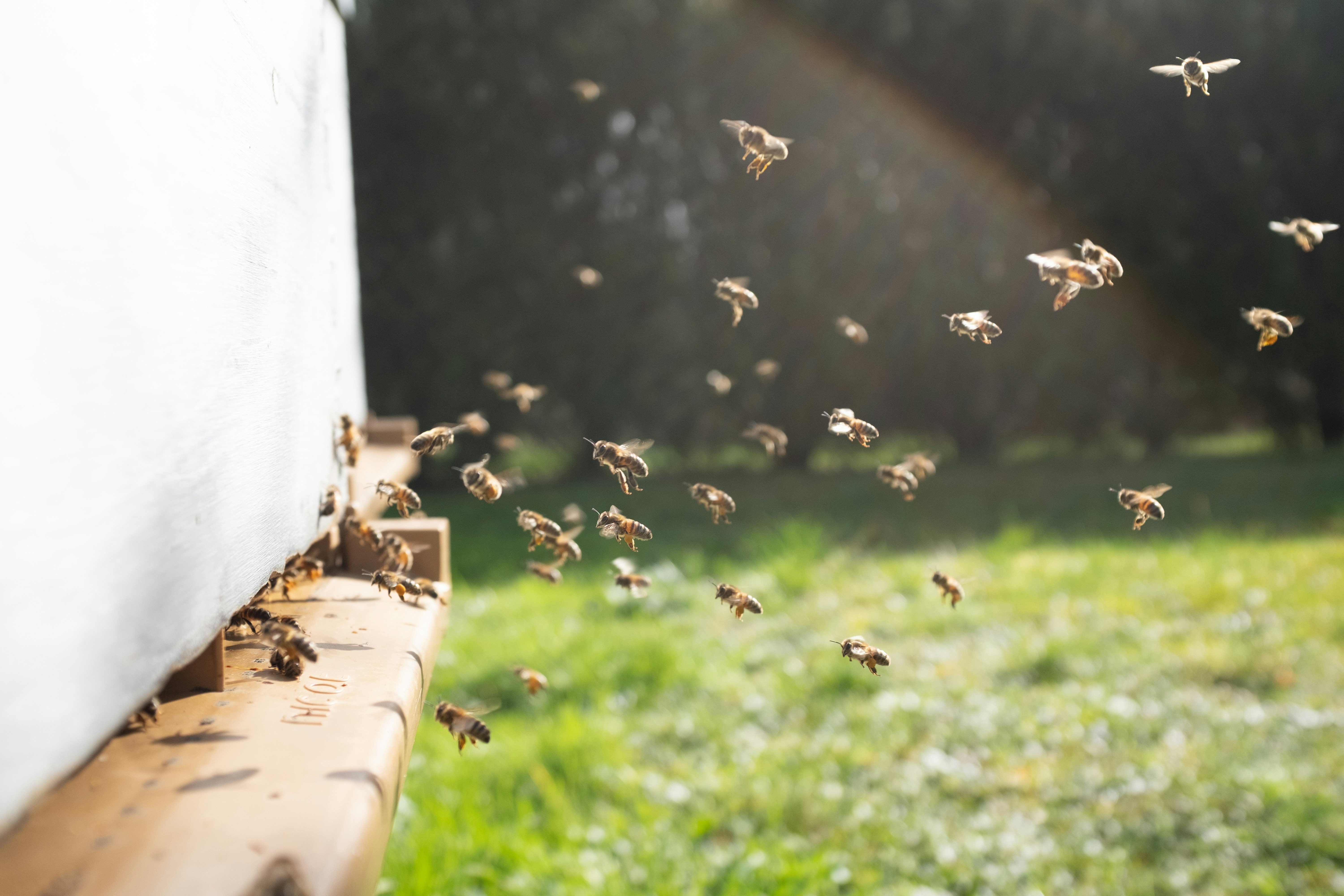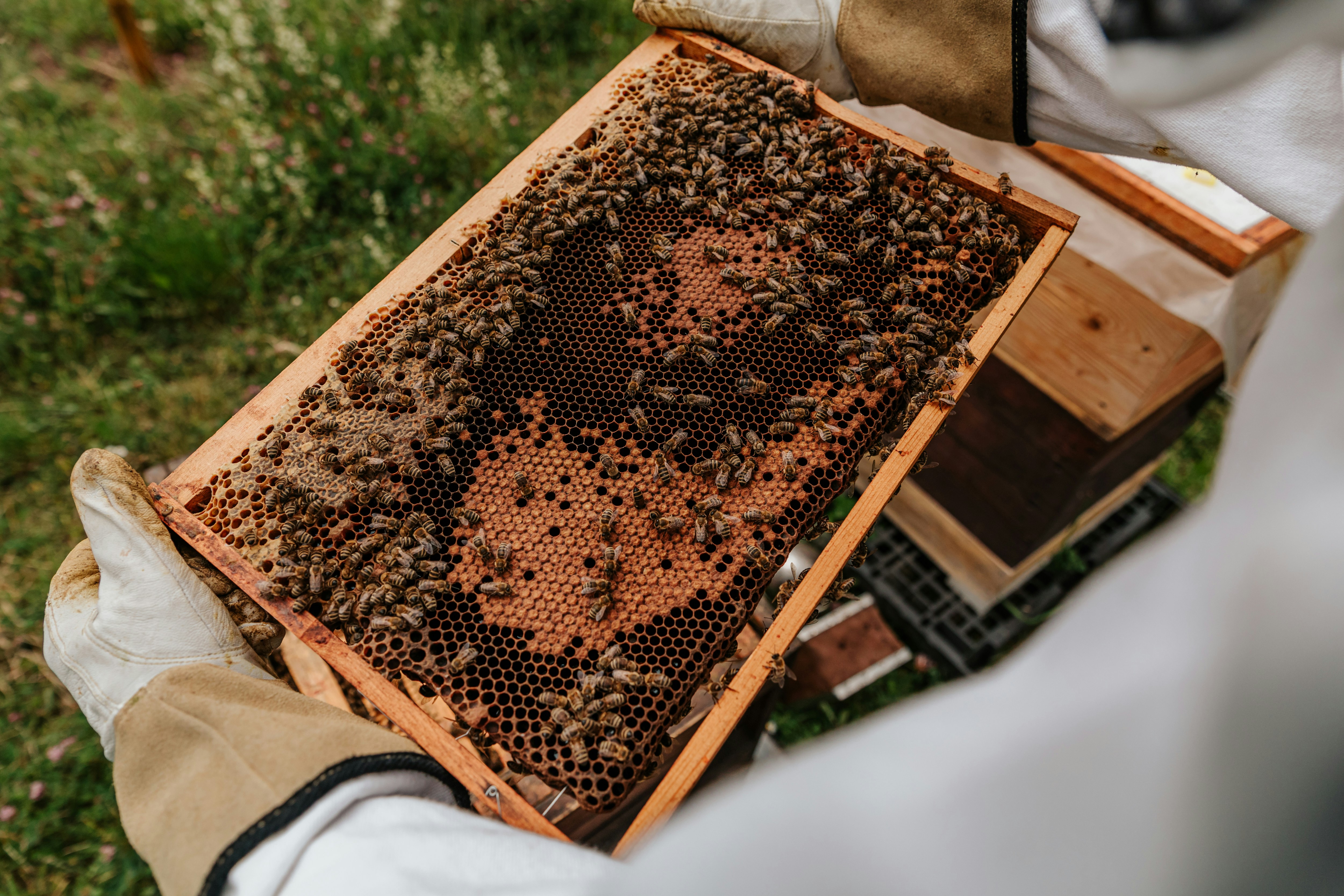10 Steps to Get Started Beekeeping
/f/101802/5435x3623/c2ba83d56d/beekeeping.jpg)
10 Steps to Get Started with Beekeeping
Your Beginner’s Guide to Starting a Backyard Hive
If you’ve ever dreamed of harvesting your own honey, pollinating your garden, or supporting the environment, beekeeping might be the perfect hobby—or even small business—for you. Whether you're in a rural area or a suburban backyard, beekeeping is more accessible than you might think.
But where do you start?
Here are 10 clear steps to guide you through the exciting (and sweet) journey of becoming a beekeeper.
AI was used to generate this article. Sick of AI bots and AI generated search result responses? Want to have a video call with an actual human beekeeper now? Our experienced beekeepers are available to give advice and talk through your beekeeping questions or issues. Download The Guided App at https://theguidedapp.com/ and have a video call with a beekeeper now!
1. Learn the Basics of Beekeeping
Before buying equipment or bees, start with research. Understanding bee biology, hive behavior, and seasonal cycles will help you manage your bees effectively and confidently.
How to get started:
Read beginner books like Beekeeping for Dummies or The Beekeeper’s Handbook
Join local beekeeping clubs or forums
Take an online or in-person beekeeping class
Watch videos or documentaries about hive management
Pro Tip: Local clubs can connect you with experienced mentors, which is one of the best ways to shorten your learning curve.
2. Check Local Regulations and HOA Rules
Beekeeping laws vary by city, county, and state. Some areas require registration, limit the number of hives, or restrict hive placement.
Do this before you begin:
Contact your local extension office or agriculture department
Ask about zoning laws, permits, or HOA restrictions
Make sure your neighbors are informed and comfortable
Why it matters: Being a good beekeeping neighbor can prevent complaints and protect your bees from future legal issues.
3. Choose a Good Location for Your Hive
Your hive needs a safe, accessible location with good sun exposure and protection from wind. Bees need a nearby water source and should have a clear flight path.
Ideal hive placement:
Full morning sun (facing southeast is best)
Slight elevation or stand to protect from ground moisture
Away from heavy foot traffic or animals
Near flowering plants but not too close to neighbors
Bonus tip: Bees use water to cool their hive—consider placing a birdbath with floating pebbles nearby.
4. Decide What Type of Hive to Use
There are several hive styles, but most beginners start with the Langstroth hive, which uses stackable boxes and removable frames.
Common hive types:
Langstroth (most common) – modular and easy to inspect
Top-Bar Hive – more natural but harder to manage for beginners
Warre Hive – vertical but with a simpler, low-intervention philosophy
Stick with Langstroth unless you have experience or a mentor to help with alternatives.

5. Buy Your Beekeeping Equipment
Beekeeping requires some up-front investment, but many items last for years. Start with the essentials:
Basic gear:
Hive boxes (1 deep, 2 medium boxes to start)
Frames and foundation
Beekeeper suit or jacket with veil
Gloves
Hive tool
Smoker
Bee brush
Feeder (for early-season feeding)
Tip: Many beekeeping suppliers sell beginner kits that include most of what you need.
6. Order Your Bees Early
Bees are typically ordered in winter for spring pickup or delivery. You can buy bees in several forms:
Your options:
Package bees – A box with 2–3 lbs of bees and a queen (most common)
Nucleus colony (nuc) – A small, working hive with brood, honey, and a mated queen
Local swarm – Free, but harder for beginners to manage
If possible, buy local bees adapted to your climate and conditions.
7. Set Up Your Hive Before the Bees Arrive
Assemble and paint your hive boxes (white or light color reflects heat) and place them in your chosen location at least a few days before your bees arrive.
Set up checklist:
Hive stand or cinder blocks to raise hive
Secure and level hive base
Install entrance reducer if early spring
Prepare sugar syrup if using a feeder
Bonus: Have a spray bottle of sugar water ready for calming bees during installation.
8. Install Your Bees Into the Hive
Installing your bees is an exciting milestone—and not as scary as it sounds. Package bees are gently shaken into the hive or poured in after placing the queen cage. Nucs are transferred frame by frame into your hive box.
Quick tips:
Wear protective gear even if you’re confident
Use your smoker sparingly to calm bees, not scare them
Follow instructions from your bee supplier for release timing and feeding

9. Monitor and Maintain Your Hive
The first few months are crucial. You’ll inspect the hive every 7–10 days in spring and less often in summer. Your job is to ensure:
The queen is laying eggs
Brood is developing
Bees have enough space and food
There are no signs of disease or pests (like Varroa mites)
Log each inspection to track the colony’s growth, queen status, and any issues.
10. Harvest Honey (Eventually!) and Support Your Bees Year-Round
Don’t expect honey in your first year—your bees need it more than you do as they establish. In future years, you can harvest excess honey in late summer or early fall.
Also important:
Feed your bees in early spring or late fall if needed
Prepare your hive for winter (insulation, mouse guards, ventilation)
Check for pests like mites using sugar rolls or sticky boards
Remember: Beekeeping is a seasonal cycle, and your role changes with the time of year—from builder and feeder in spring to honey harvester in summer, and protector in winter.
Final Thoughts
Beekeeping is both rewarding and humbling. You'll gain not only fresh honey and improved pollination but also a deeper connection with nature. The key is to start small, stay curious, and learn as you go.
By following these 10 steps, you’ll be well on your way to becoming a successful backyard beekeeper—one who nurtures a healthy colony, enjoys a sweet harvest, and supports vital pollinators in the process.
Ready to Begin?
Still have questions about getting started beekeeping? Our experienced beekeepers are available to give advice and talk through your beekeeping questions or issues. Download The Guided App at https://theguidedapp.com/ and have a video call with a beekeeper now!
Happy Beekeeping!
This article is generated by AI. For comments, questions, or other inquiries, please reach at [email protected].
/f/101802/4649x3099/9fa7f459da/speech-therapy.jpg)
/f/101802/4819x3213/c590b5823a/graphic-design.jpg)
/f/101802/3666x4582/09d3857211/audio-visual.jpg)
/f/101802/7680x5120/c316d09735/skin-care1.jpg)